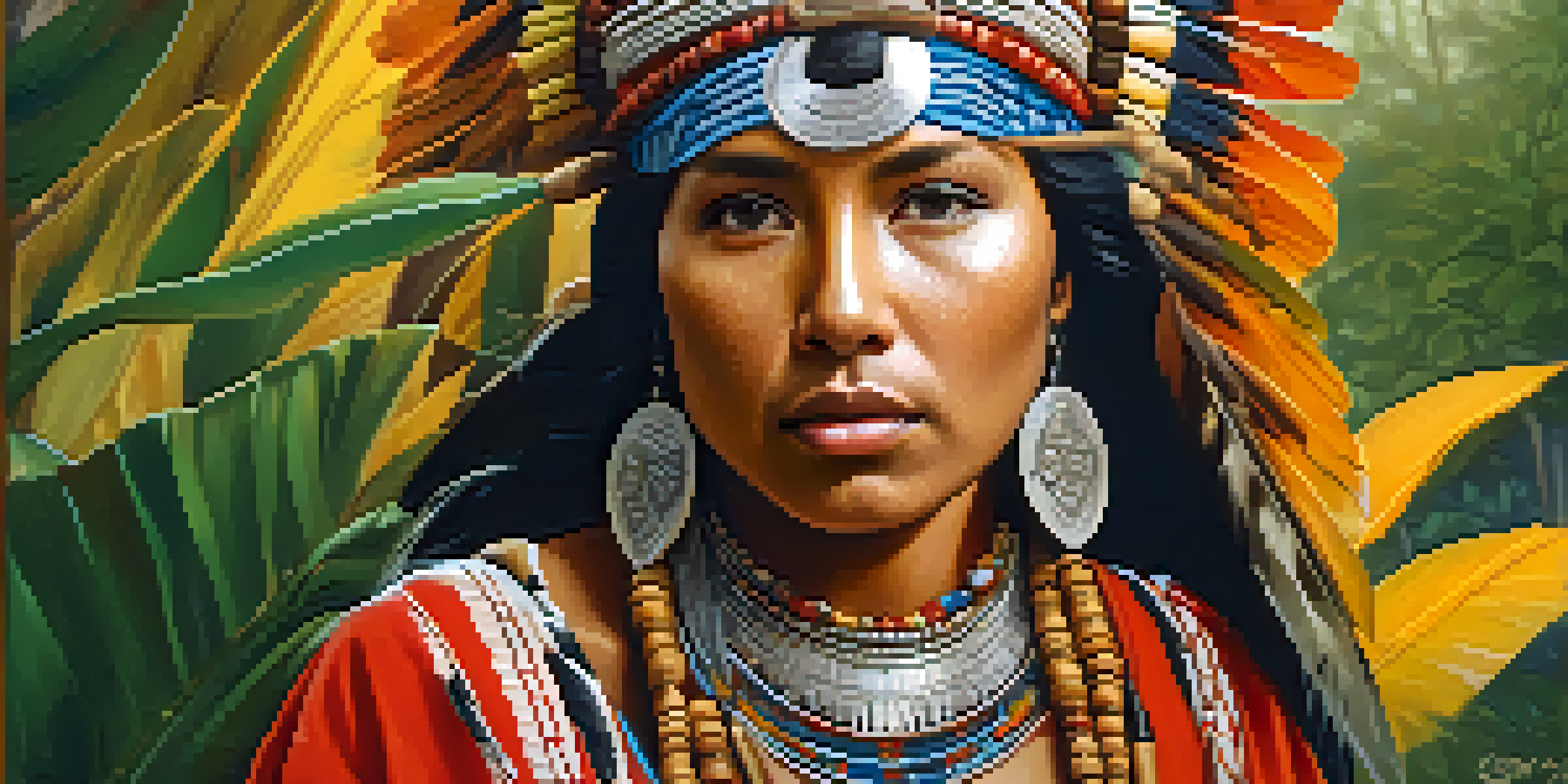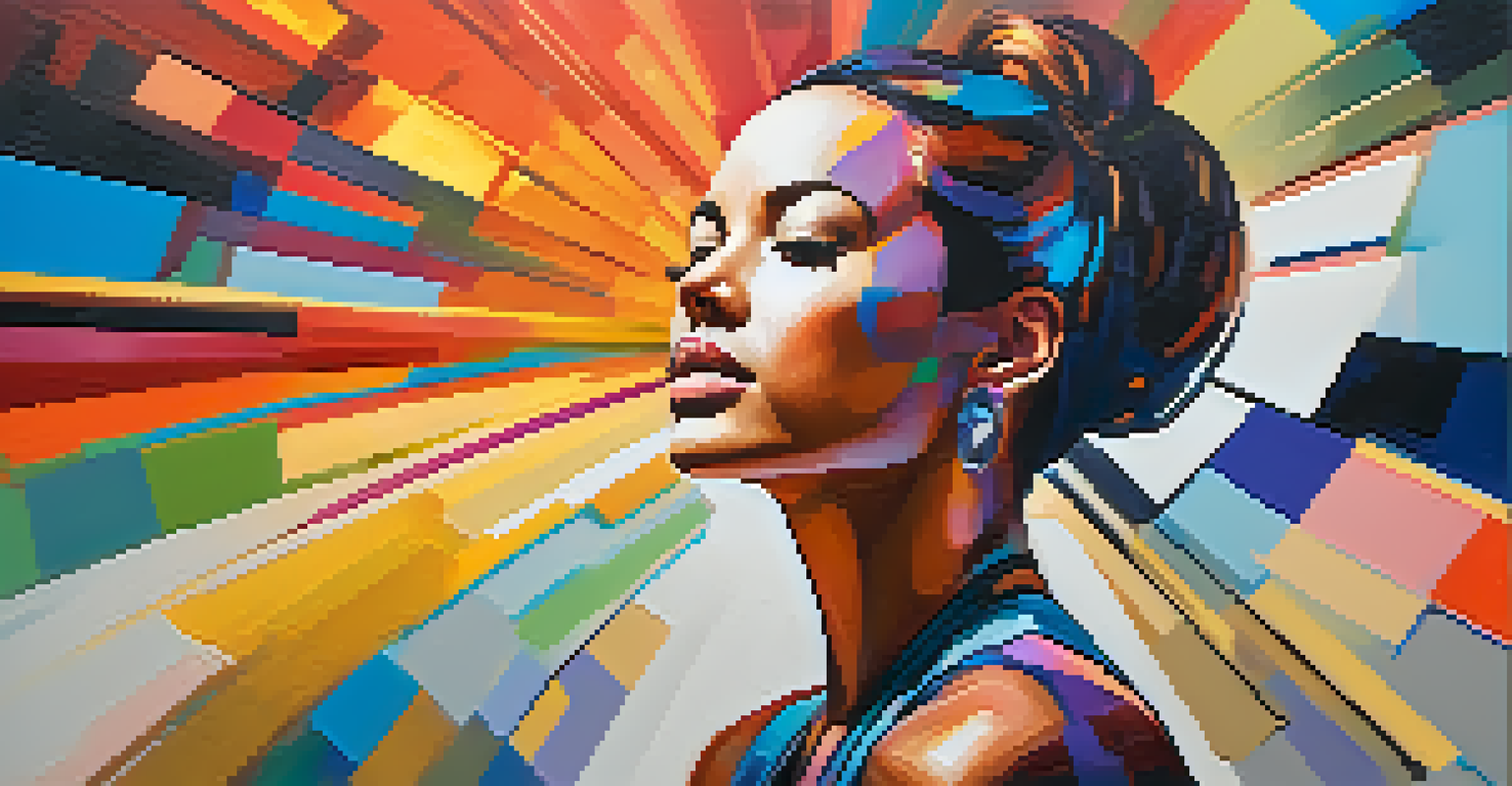Cultural Narratives in Portraiture: A Global Perspective

Understanding Portraiture Through Cultural Lenses
Portraiture is not just about capturing a likeness; it's a window into the cultural narratives of a society. Each brushstroke or camera click can reveal the values, beliefs, and historical contexts of the portrayed subject. For instance, in many Indigenous cultures, portraits serve as a storytelling device, embedding significant cultural symbols that convey deeper meanings.
Portraits are the stories we can't express in words.
In contrast, Western portraiture often emphasizes individualism, highlighting personal achievements and social status. This difference illustrates how culture shapes artistic expression, influencing what artists choose to depict and how they choose to depict it. The lens through which we view portraiture can dramatically shift based on cultural heritage and societal norms.
Ultimately, understanding these cultural lenses enriches our appreciation of portraiture. By recognizing the underlying narratives, we can better grasp the significance of each piece, making art a powerful tool for cross-cultural dialogue.
Historical Contexts That Shape Portraiture
The history of portraiture is deeply intertwined with the socio-political landscapes of various cultures. For instance, during the Renaissance, portraiture became a way for the wealthy to assert their power and legacy, leading to iconic works that celebrated humanism and individuality. In contrast, during periods of colonization, portraiture often served as a means of imposing Western ideals on colonized subjects.

Moreover, different regions have their own historical contexts that influence portrait styles and subjects. In Japan, for example, ukiyo-e prints often depicted courtesans and actors, reflecting societal values and interests of the time. Such historical nuances provide insight into why certain subjects and styles were favored in different eras.
Portraiture Reflects Cultural Narratives
Portraiture serves as a window into the cultural values, beliefs, and historical contexts of a society, revealing deeper meanings beyond mere likeness.
By studying these historical contexts, we can appreciate how portraiture not only mirrors individual identity but also reflects broader societal changes. This understanding deepens our connection to the artwork and the time periods they represent.
Cultural Symbolism in Portraiture
Cultural symbolism plays an essential role in portraiture, often conveying messages that go beyond the surface. For instance, in African portraiture, colors, patterns, and accessories can signify social status, achievements, or even spiritual beliefs. Each detail is carefully chosen to tell a specific story about the individual and their culture.
Art is the most beautiful of all lies.
Similarly, in traditional Indian portraiture, elements like jewelry and clothing are laden with meaning, reflecting the subject's identity, marital status, and regional heritage. These symbols create layers of interpretation that enrich the viewer's experience, making portraiture a dynamic form of communication.
Recognizing and understanding these cultural symbols enhances our engagement with the artwork. It allows us to appreciate the depth of meaning behind each portrait, transforming our viewing experience into a more thoughtful exploration of cultural narratives.
The Role of Gender in Portraiture
Gender has been a significant factor in shaping portraiture throughout history. Traditionally, women have often been portrayed in ways that emphasize beauty and domesticity, while men are depicted with valor and authority. This gender disparity highlights the societal norms and expectations of different cultures, revealing how portraiture can perpetuate stereotypes or challenge them.
In contemporary portraiture, artists are increasingly using their work to challenge these gender norms. For example, feminist artists may choose to depict women in powerful roles or subvert traditional representations, pushing viewers to reconsider their perceptions of gender. This shift demonstrates how portraiture can evolve alongside societal changes.
Historical Context Shapes Styles
The history of portraiture is intertwined with socio-political landscapes, influencing the subjects and styles favored in different cultures and eras.
By examining the role of gender in portraiture, we gain insight into not just the artwork but the cultural dynamics at play. This exploration encourages us to question our understanding of identity and representation in art.
Regional Variations in Portraiture Styles
Around the globe, portraiture exhibits a rich diversity of styles that reflect regional traditions and artistic influences. For example, Western portraiture often focuses on realism and detail, while Asian art may embrace abstract forms and stylized representations. These differences illustrate how geography and cultural heritage shape artistic expression.
In Latin America, portraiture can incorporate vibrant colors and bold patterns, influenced by indigenous cultures and colonial histories. This blend of styles results in unique works that tell multifaceted stories about identity and heritage. Each region's portraiture style serves as a reflection of its cultural values and historical experiences.
Exploring these regional variations not only broadens our appreciation for portraiture but also highlights the interconnectedness of global art. Each style offers a distinct perspective on the human experience, inviting us to engage with diverse cultural narratives.
Modern Technologies and Portraiture
In today’s digital age, the landscape of portraiture is evolving rapidly thanks to advancements in technology. Photographers and artists now have access to tools that allow for unprecedented creativity, from digital painting to augmented reality installations. This shift is reshaping how we understand and interact with portraiture.
Social media platforms have also transformed portraiture into an interactive experience. Artists can share their work globally, receive instant feedback, and even collaborate with audiences to create community-driven pieces. This democratization of art allows for a wider range of voices and narratives to emerge in the portraiture space.
Technology Transforms Portraiture
Modern technologies and social media are reshaping portraiture, allowing for greater creativity and interaction while expanding the diversity of artistic voices.
As technology continues to innovate, it raises intriguing questions about the future of portraiture. Will traditional methods become obsolete, or will they coexist with new forms, enriching our understanding of cultural narratives?
The Future of Cultural Narratives in Portraiture
Looking ahead, the future of portraiture promises to be an exciting fusion of tradition and innovation. Artists are increasingly merging cultural narratives with modern techniques, creating works that resonate with contemporary audiences while honoring their heritage. This blending of old and new can foster a deeper understanding of diverse identities.
As global connectivity grows, we can expect portraiture to further reflect the complexities of our multicultural world. Artists from various backgrounds will bring their unique stories to the forefront, challenging the traditional notions of representation in art. This shift can create a more inclusive and diverse art landscape.

Ultimately, the future of cultural narratives in portraiture lies in our ability to embrace change while respecting tradition. By remaining open to new perspectives, we can continue to appreciate the rich tapestry that portraiture weaves across cultures and time.